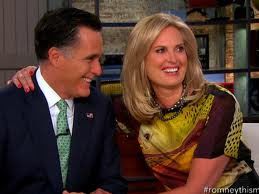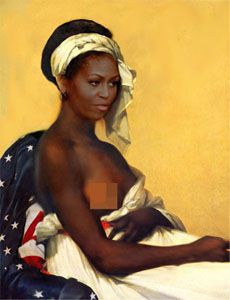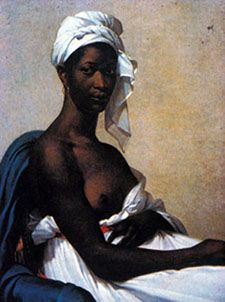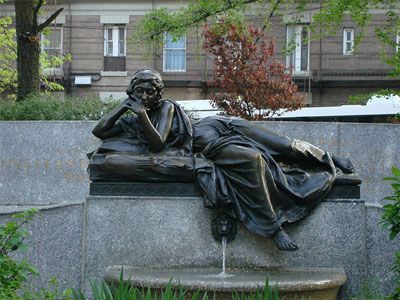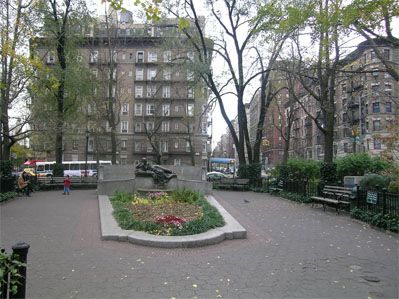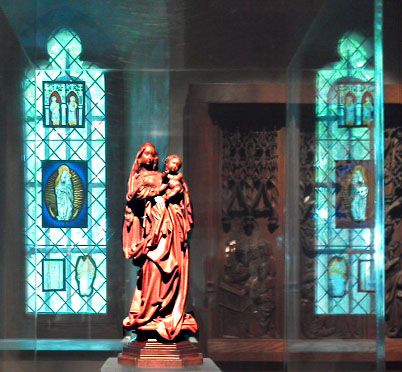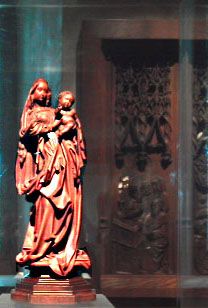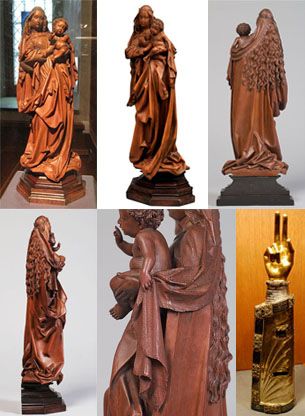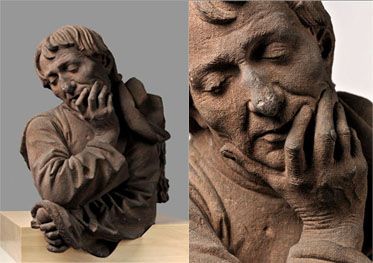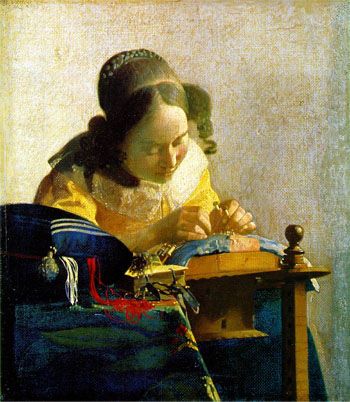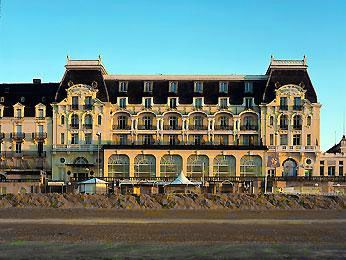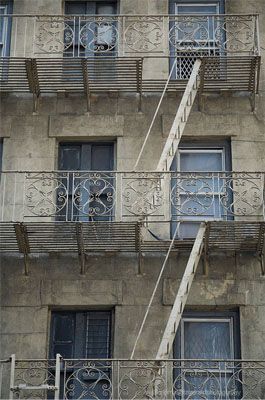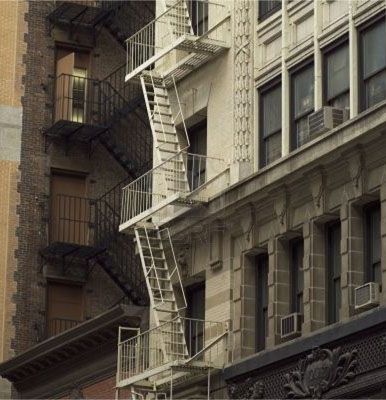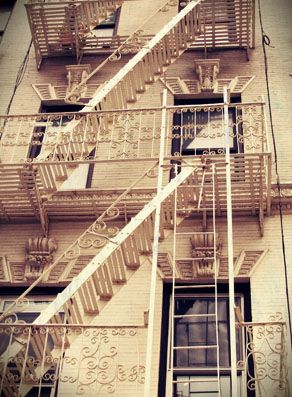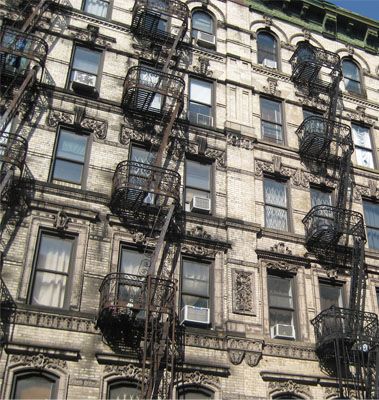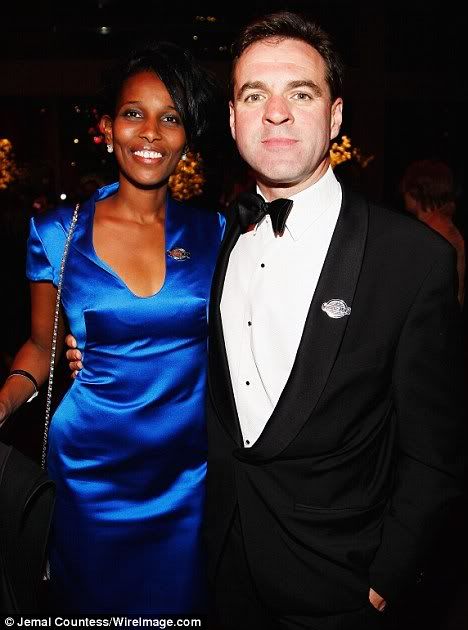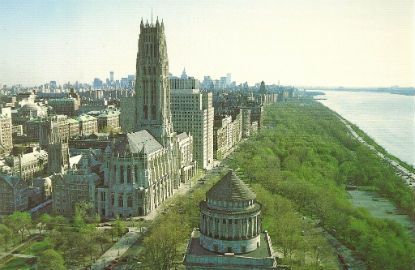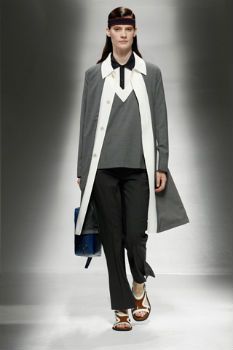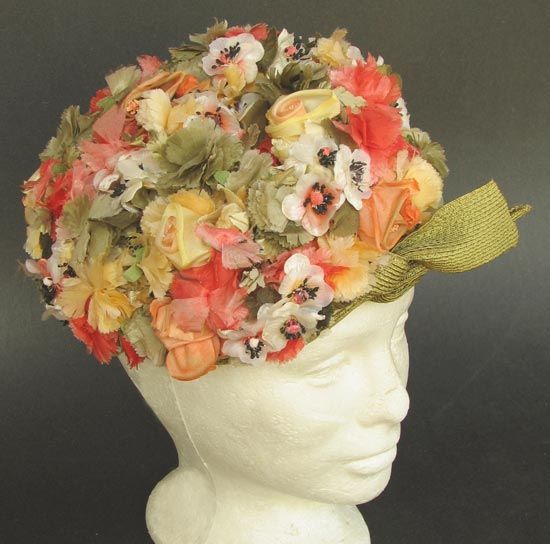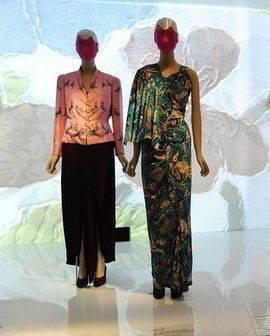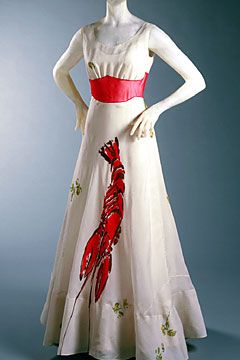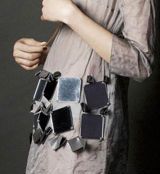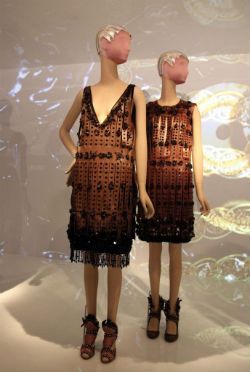Schiaparelli's designs displayed at the Metropolitan's
Schiaparelli and "Prada: Impossible Conversations",
with the shoe-hat, the lobster dress, and other gowns.-----------------------------------------------------------------------------------------------------
When a fashion designer says that her aim is to introduce ugliness into women's clothes, what do you do?
That is what Prada said in an imaginary dialogue she held with Schiaparelli, the "avant-garde" designer of the early twentieth century.
The "Dream Dialogue" between Schiaparelli and Prada is part of the Metropolitan Museum's "
Schiaparelli & Prada, Impossible Conversations" exhibition that runs through August 19. Prada appears as her self, and Schiaparelli is reincarnated by the actress Judy Davis.
Prada is our contemporary expert on women's clothes. Her clothes are uninteresting, and their ugliness factor is more a boring lack of style than anything "shocking" the avant-gardists attempted through wit and imagination at the peak of their creativity. Prada says she is influenced by Schiaparelli's designs, and hence the exhibit (and her new line of work). But what she's really after is the rebellious essence of the early twentieth century avant-gardists. Of course, she misconstrues their efforts and intentions. They never wanted to destroy beauty, skill and culture, as do die-hard post-modernists like her.
Prada is the avant-gardist of our era, who wishes ugliness for women. That is her "shocking" contribution to her art. Not playful lobster dresses and witty shoe-hats (from the foot to the head, as Schiaparelli joked). But the telling point in Prada's conversation with Schiaparelli was not that she wishes simply ugliness for women and to discard their femininity (if these are just simple things), but that she wishes POWER for women. Power over what? Over men; over their destiny as women (the weaker sex, as she calls women); over their bodies, one of which is of course their ability to have (and NOT have, in Prada's argument) children. Prada, as with all feminists, doesn't really want equality for women, but a recreation of their person-hood. She wants to destroy the feminine woman, destroy her feminine essence and unique strength, which according to feminists
is woman's weakness, then create a super creature that presides over all others, and especially over men. What feminists ultimately wish to create, although they would never admit to this, or even recognize this, is an alien creature/monster.
Schiaparelli is the better, the more talented, the more skilled, the more educated designer. Her clothes are well-crafted, her textiles well-chosen, and her designs far more superior than what Prada has to offer. Even her presence is more alluring and imaginative than the frumpy Prada. Still, there is no denying that Schiaparelli's playfulness did contribute to the decline in cultural excellence. She dismissed skill for pure imagination. Prada is ultimately her heir, who works simply with her ideas, without the finesse and skill necessary to back them up.
Prada is the supreme post-modern artist of our era. Ideas (and almost always bad, ugly ideas) are the crutch she leans on, as though things materialize out of the nether worlds of her vapid brain.
I would get Schiaparelli's "lobster dress" and "shoe-hat" any time over Prada's drab dresses.
The exhibition entrance is a suggested $25, but you can enter with a donation of any amount. The guy at the ticket booth took my "donation" of $2 with good humor. You can spend quite a bit of money at the Museum's store, with its overpriced, but one-of-a-kind items made especially for the exhibition, to make up for a lower entrance fee.
My instincts were right about Prada's feminism which leads to equality, which ultimately means power of women over nature.
Here is some background on her:
As a young woman, Prada, who has a degree in political science and then studied mime with the Piccolo Teatro in Milan, was a signed-up member of the Communist Party and a reluctant inheritor of her grandfather's leather goods and glass company. She finally took the helm there in 1978.
"Italian society was becoming obsessed with consumerism, but my big dreams were of justice, equality and moral regeneration," she said. "I was a Communist but being left wing was fashionable then. I was no different from thousands of middle-class kids."
I suppose her slabs of ugly glass are some kind of homage to her grandfather Mario Prada, the founder of the Prada line. Yet a convoluted homage it is.
Mario Prada did not believe that women should have a role in business, and so he prevented female family members from entering into his company. Ironically, Mario's son harbored no interest in the business, so it was his daughter Luisa Prada who took the helm of Prada as his successor, and ran it for almost twenty years. Her own daughter, Miuccia Prada, joined the company in 1970, eventually taking over for her mother in 1978.[Source: Wikipedia]
Miu Miu may have never forgotten the second choice women in Mario's family were given to run his business. Her subconscious revenge is to scatter her works with ugly glass and crudely cut leather.
-----------------------------------------------------------------------------------------------------
Prada's convoluted homage to her grandfathers glass and leather heritage:
Prada's sack tunic with
what look like glass (but are
probably plastic) slabs from
the Met's exhibition.Tunics (Roman gladiator?)
at the Met's exhibition
From Prada' s Ready-to-wear
Fall 2009 collection(More images of the exhibition piece
here.)
-----------------------------------------------------------------------------------------------------
And on those avant-gardists. All those I have met (at least the leaders) who SELL the idea of the leftist/communist/anti-establishment avant-garde are bourgeois at heart. Avant-garde is for the common people, who literally, like the advance guard in armies, are sent to the front to fight the real, deadly battles.
Here is how the Department of Defense explains the advance guard:
Detachment sent ahead of the main force to ensure its uninterrupted advance; to protect the main body against surprise; to facilitate the advance by removing obstacles and repairing roads and bridges; and to cover the deployment of the main body if it is committed to action. [Source: Department Of Defense Dictionary of Military Terms]
The common folk get the products that seep out of the distorted imaginations of these armchair avant-gardists, while they live safe and secure bourgeois lives.
That is how Prada is living her life. Her husband is the "boss" as she has arranged it. She acts as the creative force, while he runs the business and rules the staff with his
boisterous personality. It is a "family" business, apparently run by the head of the household, Mr. Prada. They have two grown sons, one of whom is joining the family business.
Clever Mrs. Prada, who's kept her name, gives just enough of the reigns to her excitable husband, and sits demurely next to him when necessary.
Prada with her husband in 2011Prada with her two sons below (in 1999), forming her happy family which is still in tact. Families consisting of husband-wife-two/three kids are only for fake avant-gardists like her. Other "families" can be of any type: homosexual parents, unmarried parents, women bringing up their children alone, etc. All of these make up the foot soldiers who change the messy world below the palaces of the pradas.
Prada with her husband and two sons in 1999








